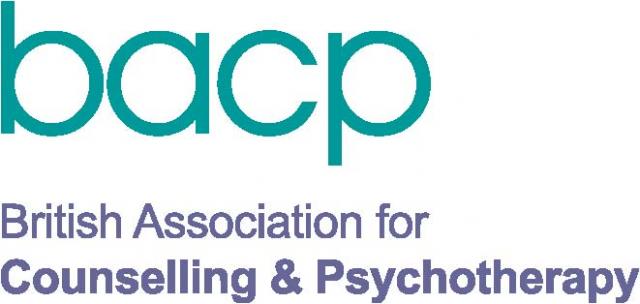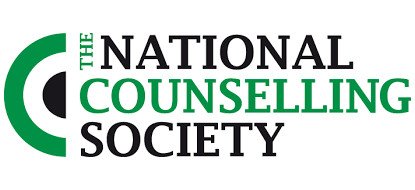Compulsive Relationships
/Addiction
Over the years, addiction has been described in a number of different ways – a lack of willpower, being morally weak, having difficulty living in the real world, a physical illness, and a spiritual disease. If you’ve had experience with active addiction, then you may have many more ways of defining this destructive and powerful force. However, addiction can be described more accurately in the following way:
“Virtually all human beings have a deep need to feel happy, whole, and to have peace of mind. At times in our lives, most of us find this wholeness, peace and serenity, but then it slides away, only to return at another time. When it subsides, we feel sadness and even a slight sense of grief. This is one of the normal cycles of life, and it’s not a cycle we can control” (Nakken, 1996)
“To some degree, we can help these cycles along, but mostly they are uncontrollable and all of us need to go through them. We can either accept these cycles and learn from them or fight against them, searching instead for elusive contentment and happiness.” (Nakken, 1996)
Therefore, addiction can be seen as an attempt to control these uncontrollable cycles. When addicts use a particular chemical or behaviour to produce a desired mood change, they believe they can control these cycles, and to begin with they can.
Addiction, at its most basic level, is an attempt to control and satisfy this desire for wholeness, contentment and happiness. But addiction is seductive and subtle and can progress into an illness that undertakes constant development from a definite, although often unclear beginning, towards an end point of total loss of control, negative consequences, and even death.
Addiction usually becomes more visible when a person continues to pursue their pattern of addiction despite repeated reoccurrences of significant negative consequences in their lives. The person’s thinking and behaviour will become more obsessive and compulsive and will lead to being preoccupied with their addiction.
Daily living can be affected due to the pursuit of their addiction. This can impact on work, education, relationships, finances, and someone’s mental and emotional health. Criminal and legal issues can also present themselves. The list of consequences is endless with addiction.
Attachment and Trauma
Human beings have an instinctual need for love, connection and attachment. It’s what secures our feelings of safety, security, and if healthy provides a positive view of ourselves, other people, and the world around us.
If we encounter trauma – rejection, abandonment, neglect, abuse, feelings of shame, and experience a lack of protection, love and care in early life then we are more likely to develop behaviours and ways of relating to others from a shame-based or traumatised perspective. This is how compulsive or addictive relationships develop in childhood and becomes the person’s first addiction and becomes their programmed template for relating to others in adulthood.
Compulsive relationships enable each person to unconsciously continue to repeat and reinforce the feelings, thought processes, and act out behaviours developed in childhood and experience the same traumatised outcomes – feelings of rejection, neglect, abandonment, etc, and never truly experiencing healthy intimacy and establishing healthy relationships.
There are two relationship roles or styles that people develop into to form a compulsive relationship. The terms I will employ for this article to describe these styles are Co-dependent and Counter-dependent. Another description is: Empath and Narcissist.
Co-dependency
The term Co-dependency has been around for almost four decades and can be defined as:
“a pattern of painful dependency on compulsive behaviours, and on achieving approval from others in an attempt to find safety, self-worth and identity”.
Although it originally applied to spouses of alcoholics, researchers discovered that co-dependency was much more commonplace than had been imagined. In fact, they found that if you were raised in a dysfunctional family or had an ill parent, you’re likely to be co-dependent (Cruise & Cruise, 1990)
Co-dependency develops over time from a painful childhood and up-bringing. Many individuals in their early life had inadequate care from a primary caregiver, experienced neglect and abandonment, and had emotional needs that were not met. They may have been involved in toxic relationships and have not learned, as adults, to form and maintain healthy relationships.
Co-dependents develop survival roles and behaviours and tend to repeat the self-defeating behaviours that they used as children, such as people pleasing, caretaking, being perfect or the good child, being passive, not feeling able to be authentic, and not being assertive. They didn’t attend to their own needs or know how too. Through hyper-vigilance a person ends up over focused on others needs. The extreme end of co-dependency is having no boundary or a sense of separateness from others, and not having a clear definition of their own ‘self’.
Counter-Dependency
Weinhold, J & B (2008) are authors who have written literature on what counter-dependency is. This relationship style is the ‘flip side’ or ‘other side of the coin’ from co-dependency, describing it as a “flight from intimacy”. There are three basic developmental reasons why adults behaviour in counter-dependent ways.
Firstly, they did not bond sufficiently with their parents during the first year of life. Secondly, their parents were not able to help them become emotionally separate during the second and third years of their lives, and finally, they suffered developmental traumas as the result of various forms of abuse and/or neglect.
Counter-dependents have difficulties with intimacy and being close to others. They have a very strong need to be right—all the time, and they are controlling, self-centred, selfish, demanding, need things done their way, grandiose and egotistical.
Counter-dependents are resistance to or refuse to ask for help. They expect perfection in themselves and expect others to be perfect too, therefore, they are extremely critical, judgemental, shaming, undermining, and can be very nasty and abusive towards others. They cannot bare to feel any guilt or shame and experience extreme discomfort in appearing weak or vulnerable and have an extreme fear of abandonment. They are more likely to remind you of a two-year-old than an adult.
While co-dependents centre their behaviour on what others do, think, and want, Counter-dependents are on the flipside of this. Counter-dependency is where someone projects self-confidence, success, and power on the outside, but on the inside, they are fragile and insecure, suffering from low self-esteem. Their picture-perfect exterior hides an inner persona that is needy, scared, and feels inadequate.
Counter-dependents take every possible measure to ensure that they are not dependent on others for anything. They tend to accomplish this with passive-aggressive behaviour and/or rebelling against authority figures. Counter-dependents can often be defensive, disruptive and defiant, masking an underlying sense of loneliness and alienation. Sadly, the results of counter-dependency causes them to push away the love, intimacy and support they so desperately crave.
Counter-Dependent vs. Co-Dependent
When comparing these two sets of behaviours or roles side-by-side, you can clearly see the marked contrast between them but yet this is a relationship that can lock together thus establishing a compulsive, addictive or toxic relationship. Often in this type of relationship neither partner is one or the other role but more of a mixture of both but with one role more dominant. However, people can work on these traits to form healthier relationships.
There is a way out of compulsive relationships.........
Healthy Intimacy
Success in relationships means knowing how to be intimate with another person in a real or genuine way. This is what is lacking in addictive or compulsive relationships.
So, what is true intimacy?
Intimacy involves feelings of emotional closeness and connectedness with another person and the desire to share each other's innermost thoughts and feelings. Intimate relationships are characterized by attitudes of mutual trust, caring, and acceptance.
A key part of our sexuality is our ability to be intimate: the ability to love, trust and care for others in both sexual and other types of relationships. We learn about intimacy from those relationships around us, particularly within our families. There is always the hope that parents teach their children about intimacy and how to engage in healthy relationships but sadly this rarely happens. Also, what you experienced as a child will determine whether you will engage in true intimacy in adulthood.
To have true intimacy with others, a person must be willing to take emotional risks when they share personal details and stories. Emotional intimacy doesn't automatically occur with sexual intimacy, as people who are sexually involved may still be unable or choose not to share their innermost thoughts and feelings. In fact, people sometimes find it easier to be emotionally intimate with friends than with a sexual partner.
Working through compulsive or addictive relationships in therapy is possible if both individuals are committed to making changes and working on themselves and the relationship. Learning about healthy intimacy, improving communication and implementing boundaries are key elements to forming a better relationship with yourself and in a partnership or marriage. If you think your experiencing being in a compulsive or addictive relationship, then there is hope and a way out of this unhealthy dynamic.
This article was written by Leon Standing, a therapist with The Palmeira Practice.
If you would like support about the issues mentioned in this article, please contact The Palmeira Practice to book an initial appointment with Leon Standing
References
Cruise, S. & Cruise, J. (1990) ‘Understanding Co-dependency’, Florida: Health Communications, Inc.
Nakken, C. (1996) ‘The Addictive Personality: Understanding the Addictive Process and Compulsive Behaviour’, Minnesota: Hazelden Publishing
Weinhold, J & B (2008) ‘Counter-dependency – The Flight From Intimacy’, California: New World Library








